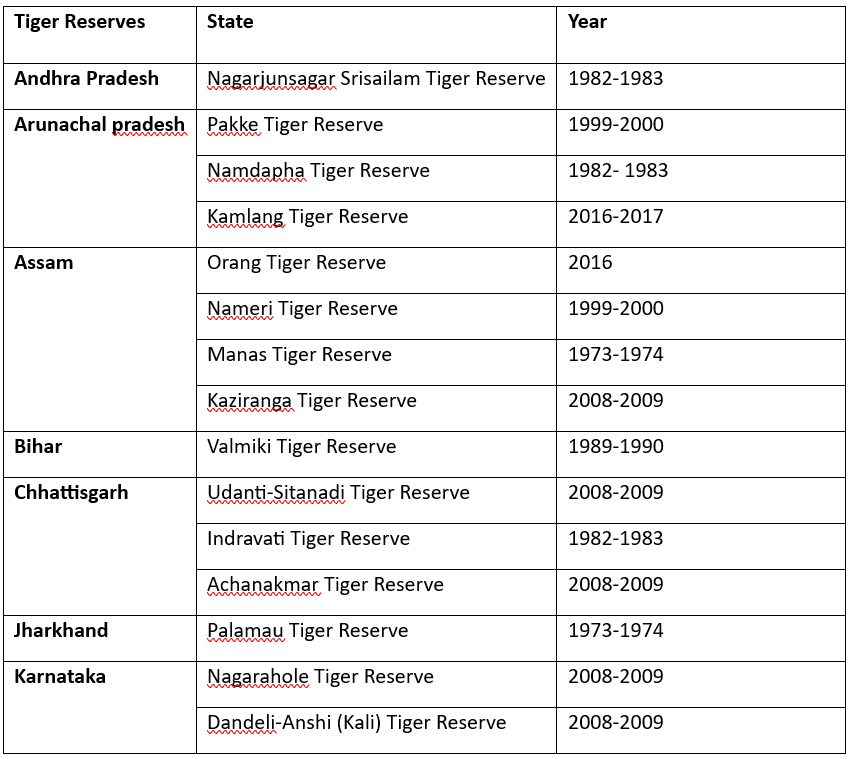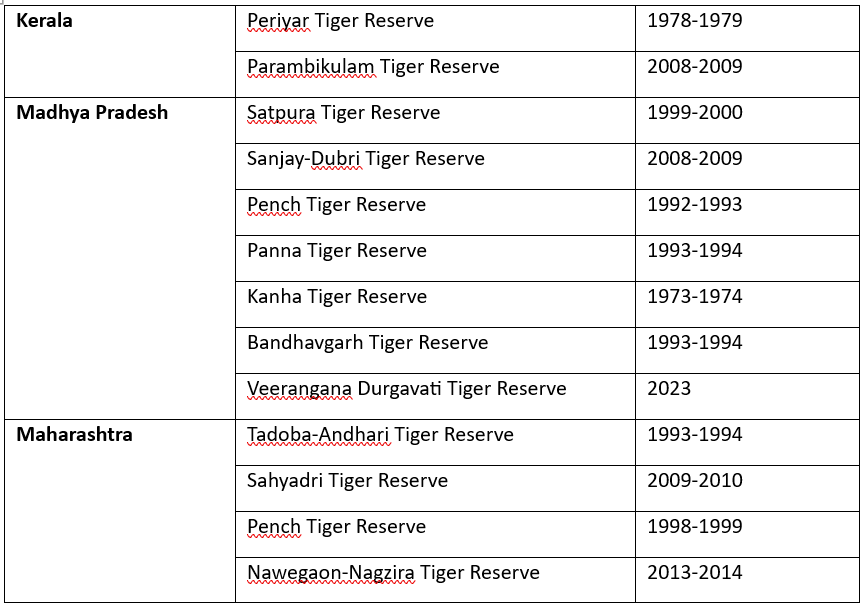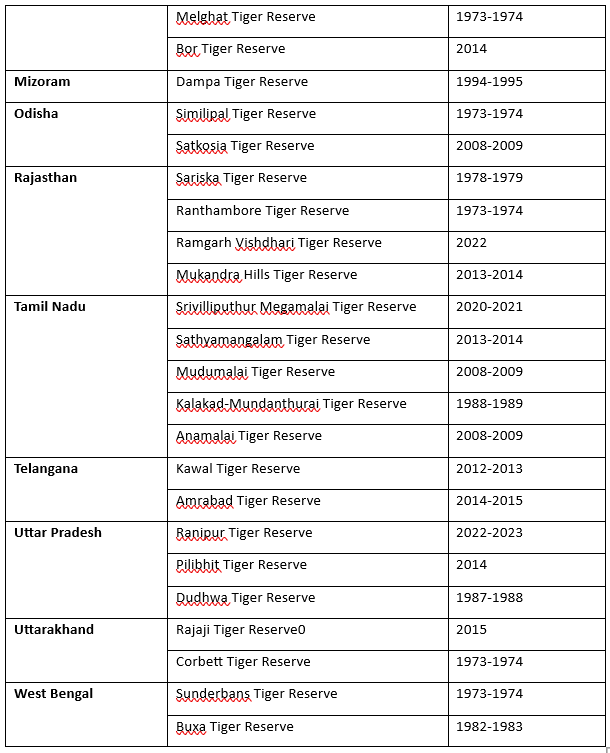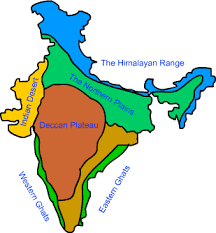
Tiger Reserves in India, Preserving Striped Big Cats and Their Habitat
- Tiger Reserves in India fall under the protected areas specifically designated for striped big cats (tigers) and conserving and protecting them.
- It is set up under Project Tiger which was launched to conserve the habitat of tigers and increase their population.
- A tiger reserve can also exist as a national park or wildlife sanctuary. For example Kaziranga National Park, Sariska Park etc which is also a national park and tiger reserve.
Expanding Tiger Conservation, 54 Tiger Reserves in India
- There are a total of 54 tiger reserves in India, safeguarding a total area of 75,796.83 square kilometers.
- This constitutes over 2.3% of the country’s total land, a significant increase from the original nine reserves covering 18,278 square kilometers in 1973.
- First tiger reserve was set up in 1973 as Palamau Tiger Reserve in Jharkhand.
- Most recently declared tiger reserve is Veerangana Durgavati Tiger Reserve in Madhya Pradesh. These reserves are important for protecting the tigers that live in India.
State Wise Tiger Reserves in India



What are Initiatives Taken for Tiger Conservation?
Project Tiger:
o Project Tiger is a wildlife conservation initiative in India that was launched in 1973.
o The primary objective of Project Tiger is to ensure the survival and maintenance of the tiger population in their natural habitats by creating dedicated Tiger Reserves.
o Starting with only nine reserves covering 9,115 sq. km, the project marked a paradigm shift in wildlife conservation efforts.
o The unreliable pug-mark method of the first tiger census in 1972 gave way to more accurate techniques like the camera-trap method.
- Growth Rate in Tiger Population:
o The first tiger census, in 1972, used the unreliable pug-mark method to count 1,827 tigers.
o As of 2022, the tiger population is estimated at 3,167-3,925, showcasing a growth rate of 6.1% per year.
o India is now home to three-quarters of the world’s tigers.
o In 1973, Project Tiger began with nine reserves covering 9,115 sq. km. By 2018, it had grown to 55 reserves in different states, totalling 78,135.956 sq. km or 2.38% of India's land area.
Wildlife (Protection) Act,1972:
- The Wild Life (Protection) Act, 1972 provides a legal framework for the protection of various species of wild animals and plants, management of their habitats, regulation, and control of trade in wild animals, plants, and products made from them.
- The Wildlife (Protection) Act (WLPA), 1972 laid the groundwork for tiger conservation. It established National Parks and Wildlife Sanctuaries, segregating rights in favour of State governments and introducing the concept of Critical Tiger Habitats (CTH).
- The amendment to WLPA in 2006 led to the creation of the National Tiger Conservation Authority (NTCA) and a comprehensive tiger conservation plan.
- This marked a departure from the earlier fortress conservation approach, acknowledging the inseparable link between tiger protection, forest conservation, and the well-being of local communities.
Tiger Task Force:
- In 2005, the formation of the Tiger Task Force, prompted by concerns about tiger conservation, emphasized the necessity for a reassessment. The task force pointed out flaws in the existing strategy that heavily depended on weapons, guards, and fences.







